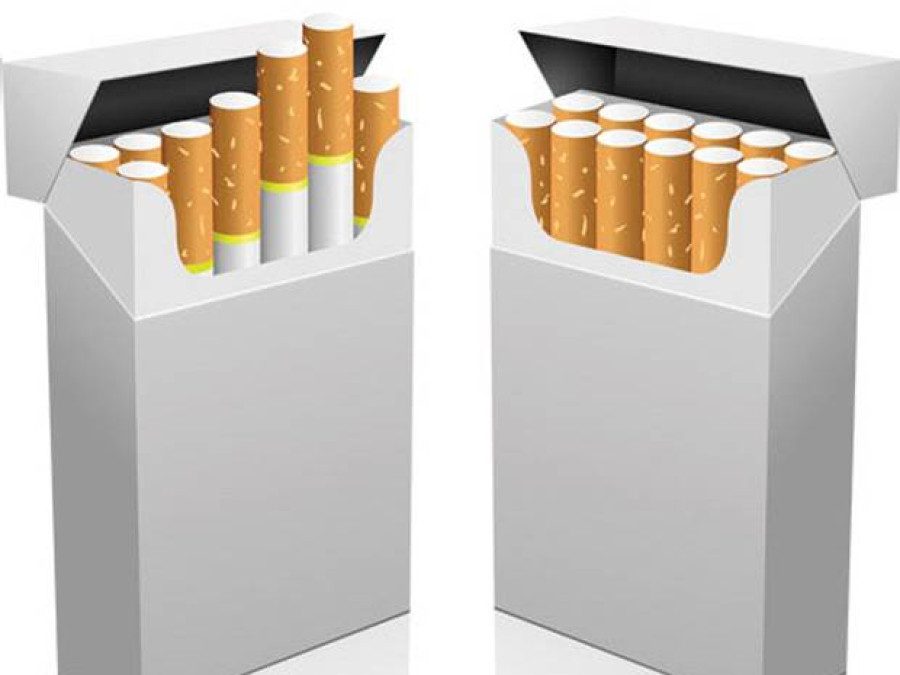Miscellaneous
Plain packaging on the cards for tobacco products
The government is planning to adopt plain packaging of tobacco products by 2018.
The government is planning to adopt plain packaging of tobacco products by 2018.
The plain packaging requires removal of all branding—colour, imagery, corporate logos and trademark—and manufacturers have to print only the brand name in a mandated size, font and place on the packet, in addition to health warnings.
Once it comes into effect, tobacco manufacturers will be allowed to use the brand name in the font and size as directed by the government. All other spaces will be used to display pictorial health warning and messages.
Health Minister Gagan Kumar Thapa revealed the government plan while inaugurating a week-long conference titled “South Asia Tobacco Control Leadership Programme” on Monday.
“We believe that plain packaging is a big leap forward for the country that strives to be tobacco free,” said Minister Thapa, inaugurating the conference. “We will continue to increase taxes and prices on tobacco products.”
Experts believe that plain packaging and pictorial warning have been a crucial factor for people to quit smoking and consumption of any tobacco products. Tobacco products are considered a major risk factor for diseases including cancer and hypertension. According to the Ministry of Health, one third of the country’s population has hypertension and 44 percent deaths are attributed to non-communicable diseases while around 10,000 people are diagnosed with cancer every year.
The government plan, however, looks ambitious as it struggles to implement directives that require 90 percent pictorial warning to be displayed in the cover of tobacco products.
Most of the tobacco companies in the country have been flouting the government directives as they have failed to devote at least 90 percent area on product covers to pictorial warnings depicting the hazards of tobacco consumption.
Amending its tobacco control directives two years ago, the Ministry of Health had mandated each tobacco company to use 90 percent space with pictures depicting cancer in human organs. The rest shall contain statutory warnings in Nepali. The amended directives also require other tobacco products—gutkha (a sweetened mixture of chewing tobacco, betel nut and palm nut), khaini (chewing tobacco) and surti (tobacco leaves)—to bear warning messages on 90 percent surface of the wrappers.
While the government had directed all the companies to comply with the decision by May 15, 2015, only one cigarette producing company has been abiding by the rule.
Cigarettes manufactured by Chaudhary Group have allotted the cover of its product with the picture of health hazards.
Interestingly, Perfect Blends (Nepal), a subsidiary company of CG, was the first company to move the apex court demanding a stay order against the government decision to increase the space for pictorial warnings to 90 percent. While the case is still sub judice, the company went ahead to implement the decision.
In terms of the legislation, Nepal tops many countries including Thailand and India that were deemed to have the biggest health warning, where such messages cover 85 percent area on packets. However, the country is struggling to implement the decision.
During the 2014 amendment, the Ministry of Health had also increased the number of graphics to be used in tobacco products. In case of cigarettes, three more pictures showing brain haemorrhage, a baby dying due to passive smoking, throat and mouth cancer have been prescribed. Also, the picture of lung cancer will now be used in gutkha, khaini and surti along with cigarettes.
Minister Thapa said the Ministry of Health is working closely with the Ministry of Industry to implement the 90 percent pictorial warning display on tobacco packages.
“The Industry Ministry had sought a few months to implement the decision because many companies had already taken production approval before the amendment of the directives. We are hopeful that all the companies will abide by the decision from coming fiscal year,” said Minister Thapa.




 16.12°C Kathmandu
16.12°C Kathmandu









